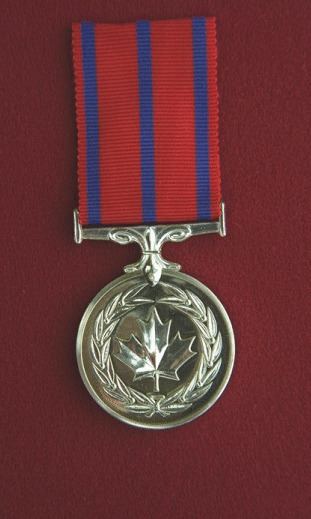Type Medal Post-nominals MB First awarded 20 July 1972 | Status Currently awarded Established 1 May 1972 | |
 | ||
Awarded for Acts of bravery in hazardous circumstances. | ||
The Medal of Bravery (French: Médaille de la Bravoure) is a decoration that is, within the Canadian system of honours, the third highest award for bravery, and one of the three Canadian Bravery Decorations gifted by the Canadian monarch, generally through his or her viceroy-in-Council. Created in 1972, the medal is presented to both living and deceased individuals deemed to have performed "acts of bravery in hazardous circumstances," and grants recipients the ability to use the post-nominal letters MB.
Contents
Design
The Medal of Bravery is in the form of a 31.8 millimetres (1.25 in) diameter silver medal with, on the obverse, the Royal Cypher of the reigning monarch beneath a St. Edward's Crown, symbolizing the Canadian monarch's role as the fount of honour, and the inscription BRAVERY • BRAVOURE. The reverse bears a maple leaf surrounded by a laurel wreath, and the name and rank of the recipient is engraved on the medal's edge.
This medallion is worn on the left chest, on a 31.8mm wide ribbon coloured red with three vertical blue stripes: for men, hung from a bar, and for women, on a ribbon bow, both pinned to the left chest. Should an individual already possessing a Medal of Bravery be awarded the medal again for subsequent acts of bravery, he or she is granted a medal bar, in silver and bearing a maple leaf, for wear on the ribbon from which the original medal is suspended.
Eligibility and receipt
On 1 May 1972, Queen Elizabeth II, on the advice of her Cabinet under Prime Minister Pierre Trudeau, created the Medal of Bravery to recognize acts of great gallantry. The name of any person, living or deceased, may be submitted to the Canadian Decorations Advisory Council— a part of the Chancellery of Honours at Government House— as a possible recipient of the Medal of Bravery. It is not necessary that the act of bravery take place in Canada, nor must the person who carried out the act be a Canadian; however, the event must have involved Canadians and/or Canadian interests. Nominations can be made no later than two years following either the act of bravery itself or the conclusion of any coroner's or court's inquest into the events for which the person was nominated. Once they have been decorated with the Medal of Bravery, recipients are granted the right to use the post-nominal letters MB. As of August 2009, the Medal of Bravery has been presented to 2,478 people, there has been at least one Bar issued. Namely Charles Stanley Winsor
Commemoration
The Royal Canadian Mint in 2006 released a general circulation commemorative quarter showing on the reverse a variation of the design of the Medal of Bravery.
Recipients
The following are some notable recipients of the Medal of Bravery:
